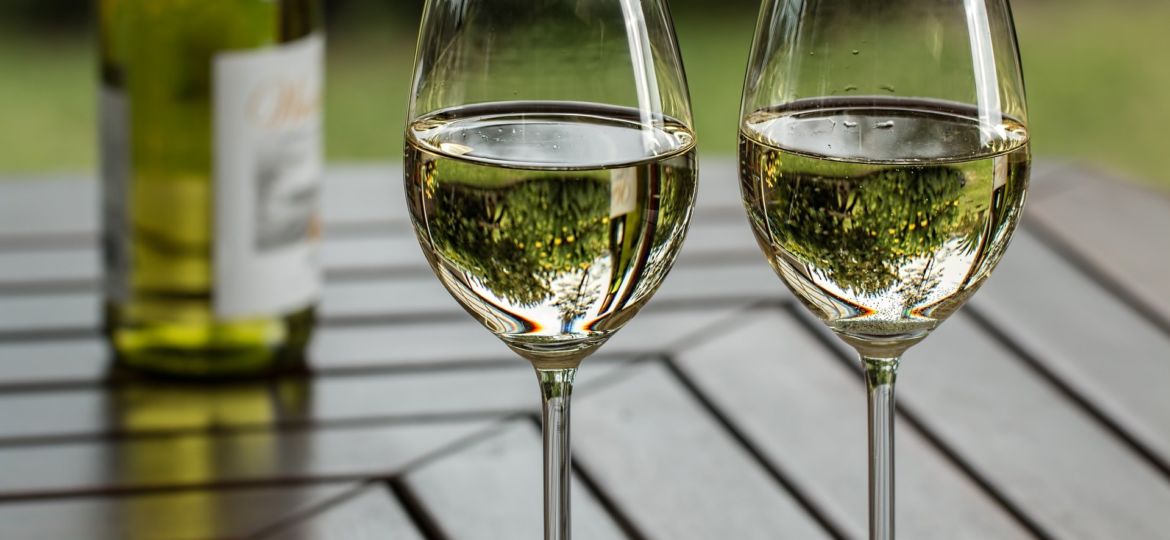
To oak or not to oak? This one simple element in Chardonnay can alter the course of the wine, regardless of where it is made. While oak can attract or repel drinkers of Chardonnay, there are so many other aspects at play in what make a particular Chardonnay worth drinking. The grape is quite difficult to pin down. While there are variations in how Cabernet Sauvignon and Pinot Noir are made, the general characteristics of those wines are preserved, regardless of what is done in the winery. Chardonnay, on the other hand, is a bit of a chameleon and adapts easily to the talents and whims of the winemaker. For a wine that is so widely planted and so widely consumed, this can create confusion and even disappointment. Today we are going to try to get our hand around how Chardonnay is made in the Los Carneros AVA located in Napa and Sonoma counties.
Great Wines
This winery, which is located in Carneros, was created in 1969 and is still family owned and operated today. The winery was purchased in 1979 by a fourth-generation Swiss winemaking family. Cuvaison focuses on small-lot and estate-grown wines, handcrafting Chardonnay, Pinot Noir, and Sauvignon Blanc only from their vineyards. Cuvaison is a certified green winery that uses solar power, water recycling, and other steps to reduce their waste footprint in addition to generating fantastic wine.
The 2018 Chardonnay was aged for 11 months in French oak barrels (25% new) with a 66% partial malolactic fermentation.
Pouring a bright gold into the glass, this wine brings forth a nose of apricot, apples, Bartlett pears, cream, and vanilla. The body on this wine is thick, and its flavor is a medium intensity. The palate is full of apples, bananas, apricots, vanilla, and a hint of clove. This wine is well-balanced, allowing the excellent flavors of this estate-grown Chardonnay to shine through.
In 1972, John Shafer went from being a Chicago executive to driving a tractor in Napa Valley. He had a dream to own a vineyard and Shafer Vineyards has lived up to his vision. His son, Doug, is carrying on the tradition. On top of running the world-renowned winery, Doug has a podcast that covers the wine industry and the people in it (check it out here). Shafer Vineyards produces around 30,000 cases of wine a year coming from their 205 vineyard acres scattered throughout Stags Leap, Napa Valley, and of course Carneros.
Shafer is a leader in sustainable winemaking. They are 100 percent solar-powered and were the first to do so in the Valley. To better control insects, Shafer created habitats for bats and birds that eat the flying insects that can damage the vines. They also have been leaders in water conservation by installing specialized sensors that dial down the needs for irrigation. Shafer also eliminated the need for rodent poison by creating habitats for owls and hawks. Their Chardonnay vineyard is even named after the red-shouldered hawk.
Shafer’s Red Shoulder Ranch vineyard in Carneros features 68 acres of Chardonnay. This vineyard has 5 different Chardonnay clones that were chosen for their lower yields and smaller grape clusters. The chardonnay is fermented whole cluster with wild yeast and matured in stainless-steel and new French oak tanks.
A lemon color in the glass, this wine smells of lemon zest, lemon curd, a fencerow of honeysuckle, with some supporting notes of pineapple and vanilla. The elevated acidity works in this wine by giving it a crisp brightness. This is no oak bomb as the palate is full of lemon, pineapple, melon, and apricot. A great example of tropical fruit Chardonnay.
Bruce and Barbara Neyers started their 15,000 case winery in 1992 and opened their Sage Canyon winery in 2000. Before making wine, Bruce was a French wine importer for Kermit Lynch, and this has had an impact on how the family crafts their wine. All of their barrels are French, and they take great care to make wine traditionally.
El Novillero Vineyard in Carneros is on the western end of the area and has a unique mix of soils that give the wine a mineralized character and a likeness to Mersault in Burgundy. Whole clusters and wild yeast are used to make the Chardonnay.
This wine is a lovely deep gold Chardonnay with powerful aromas leaping from the glass. Smells of lemon pie, pears, vanilla, and bananas are quite prevalent. The body of this off-dry wine was subdued, but the flavor did not disappoint. The palate was full of lemon pie, pears, bananas, vanilla, and even a hint of honey in the finish. This wine is ready to drink right now and provides a unique take on California Chardonnay.





